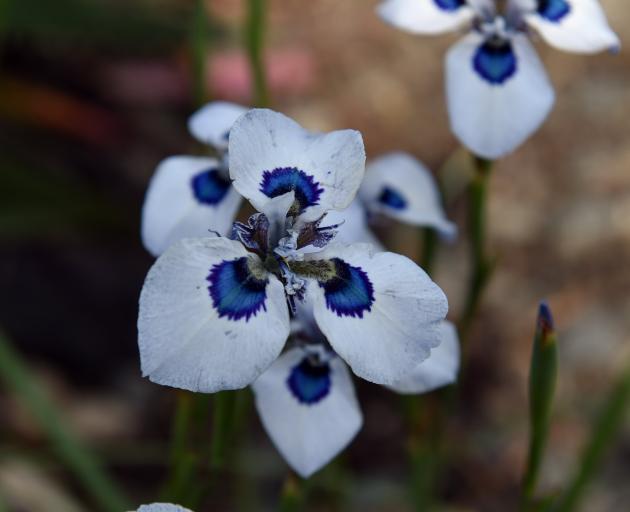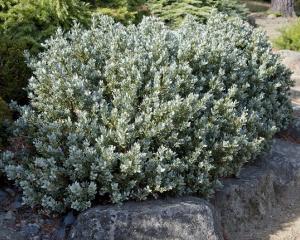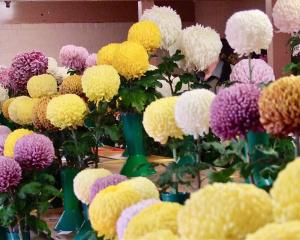
Each of the flowers’ three large white tepals bears a bright iridescent blue spot at its base, creating a striking colour contrast and a beautiful pattern. The pattern of blue dots, or "peacock eyes", are prominent nectar guides that help attract beetle pollinators. Iris-like flowers sit atop stems up to 30cm long.
Smooth grass-like foliage appears throughout winter before the attractive flowers emerge in late winter to early spring. After flowering, the entire plant becomes dormant again.
M. aristata is a beautiful cormous perennial in the Iridaceae family. It is a member of the so-called "peacock Moraea" group for obvious reasons, where other species include M. villosa, M. gigandra, and M. tulbaghensis.
Native to northern Cape Town in South Africa, it is now critically endangered in the wild due to urbanisation and habitat loss. The species is restricted to only one remaining wild population of a few dozen plants.
Fortunately, this bulb is easy to grow in cultivation if provided a sunny, dry area with well-draining soil. It can be propagated by seed or by dividing the corms when dormant.
See Moraea aristata blooming in the Southern African garden at Dunedin Botanic Garden.
Garden Life is produced by Dunedin Botanic Garden. For further information contact Kyla Mathewson.










